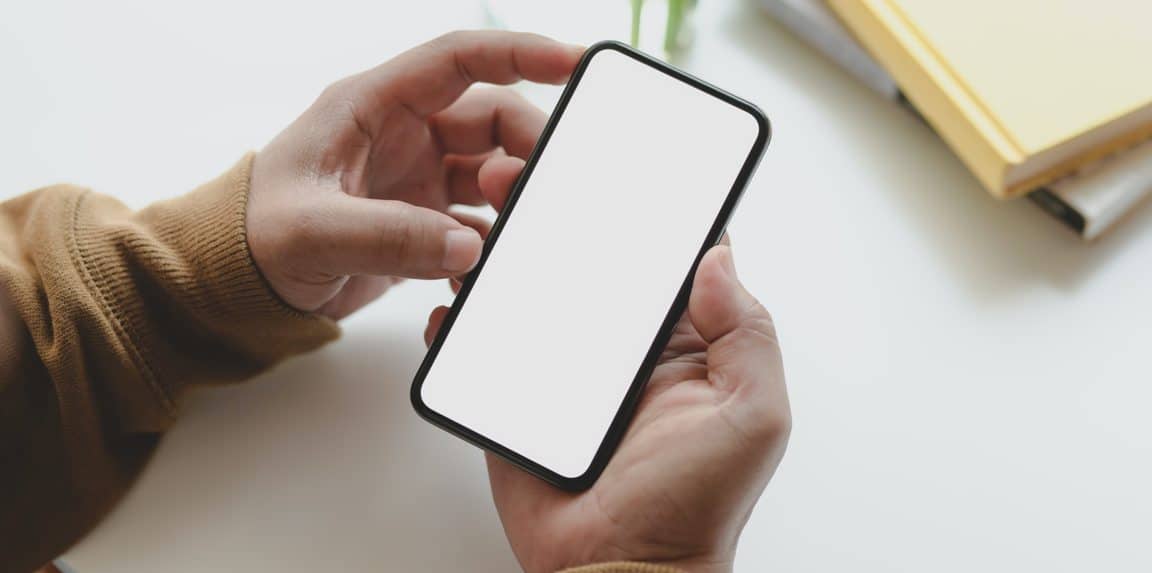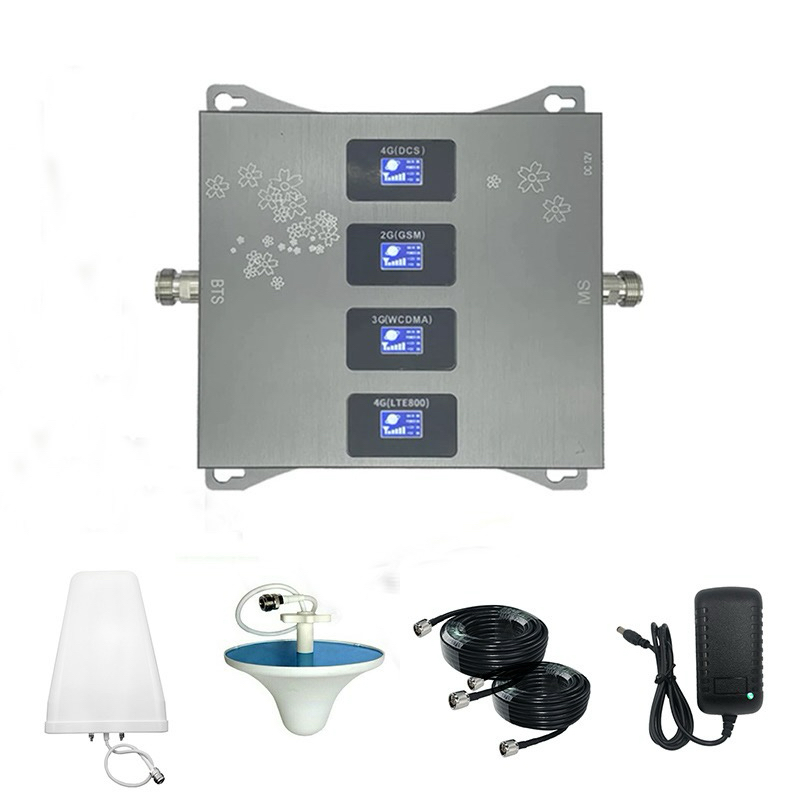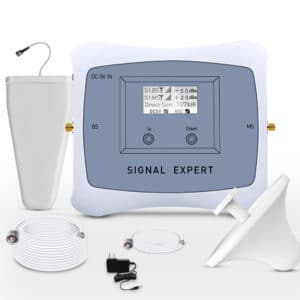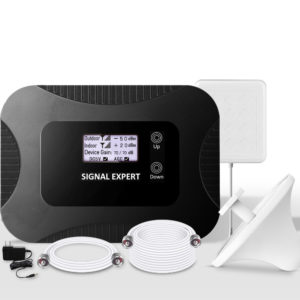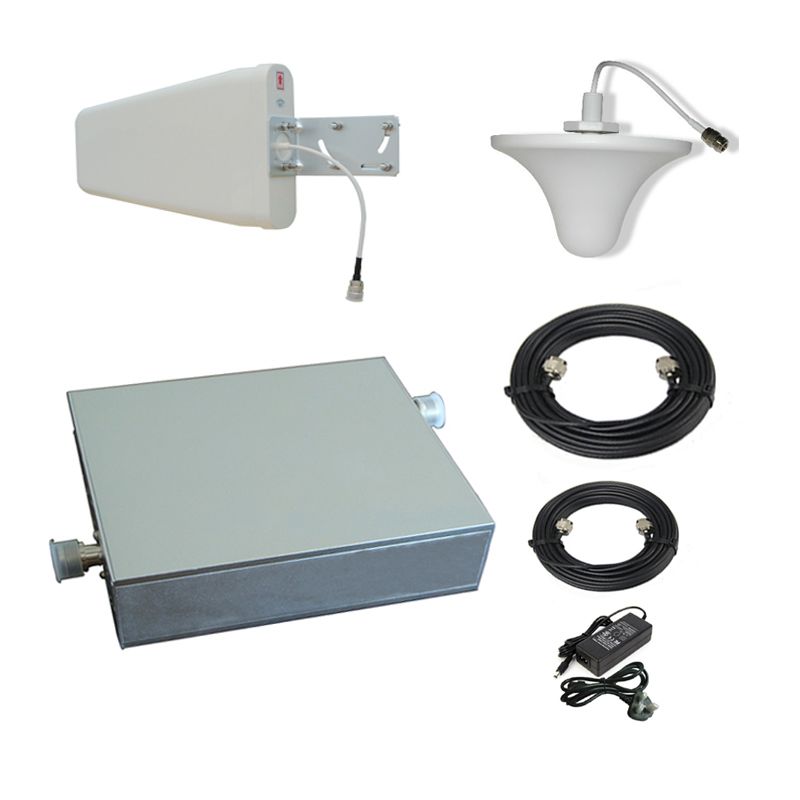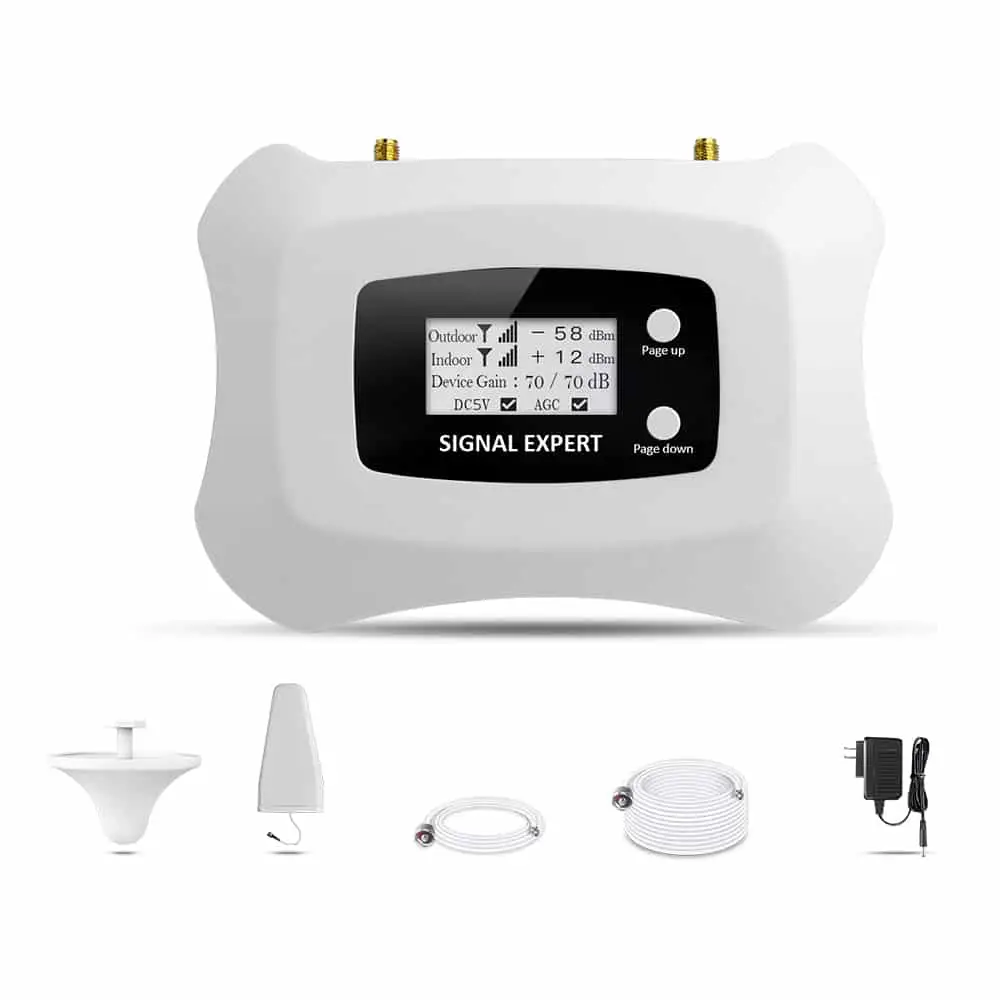What are Cell Phone Signal Boosters and How to Pick One
In this post we are going to discuss Cell Phone Signal Boosters at length and breadth.
A cell phone is indispensable in everyday life. How would you feel if you couldn’t work or communicate with your loved ones because of a weak signal? That would be a nuisance, to say the least. But why can’t you have a good service all the time?
Well, even a huge number of cell sites in cities can’t provide 100% coverage. And when you go to the countryside, the signal will inevitably deteriorate due to cell towers being few and far between.
Even if you live in an area with supposedly good coverage, it doesn’t guarantee five bars on your phone. The truth is that thick walls, insulation, reinforced concrete, and even glass can attenuate radio waves.
Other buildings, hills, dense greenery, and tons of other obstacles may impact your reception as well. Whatever the issues you bumped into, you can dramatically improve your experience with the help of cell phone signal boosters.
What is a Cell Phone Signal Booster?
It is known by many names – cell phone booster, repeater, amplifier, etc. Whatever you choose to call it, this device’s mission is to enhance your cellular signal. Thanks to its compact size, you can install it anywhere in your house, office, commercial building, etc. to turn a dead spot into an area of good reception.
Every repeater is a two-way device. It picks up an incoming cellular signal from a cell site, amplifies it, and transmits it to a mobile device. In the same way, it improves radio signals coming from a phone to a cellular base station.
Every signal booster consists of an amplifier, two antennas (external and internal), and a cable to connect them. A donor antenna picks up a signal from outside (normally, the signal is stronger outdoors) and passes it to an amplifier. An amplifier works its magic to make a signal stronger and better. From there, an enhanced signal travels to an internal antenna, which propagates it within a building.
Types of Cell Phone Signal Boosters
Operator-specific repeaters are able to handle only one specific band by a specific network carrier. For example, a Vodafone signal booster will be absolutely useless in Spark, 2 Degrees, (unless they all operate on the same band, which is unlikely). On the bright side, such devices are cheaper.
Multi-band repeaters work with several cellular standards. They are able to amplify 3G and/or 4G signals by various operators. Technically, these are several boosters put in the same box. While carrying a heavier price tag, these models are perfect for multi-user spaces such as offices, restaurants, hotels, etc.
How to Choose a Mobile Signal Amplifier
There are a few factors to keep in mind when choosing a mobile signal booster, mainly:
- supported bands and frequencies;
- coverage;
- signal gain.
Operating Frequency
Every mobile operator transmits its signals within specific bands. It goes without saying that your mobile signal booster must support the same spectrum. To learn the exact frequency in your network, you can contact your provider, install the LTE Discovery app (if you are an Android user) or call 3001#12345#* (if you have an iPhone).
In many cases though, it is beneficial to utilize a multi-carrier signal booster. They will come in handy if your household is connected to more than one network. Moreover, you may live in an area where cell towers transmit different frequencies (normally, carriers utilize high-frequency waves for urban areas and lower frequencies for countryside).
Coverage
Coverage refers to the distance an amplified signal can travel away from a booster. If you live in a small apartment or house, a booster that covers 100 square meters (1000 sq. ft.) is more than enough. You can also find models able to carry the signal across 300, 500, 1000, and even 5000 square meters, which make them suitable for public spaces and commercial property.
Gain
If you take a look at signal booster specifications, you will notice the gain indicator that looks like +XX dB. Gain shows how much stronger your signal can be if you pick this specific device. The higher the gain, the better for your reception. While domestic amplifiers feature gains + 50, +60, +65 dB, powerful commercial devices boast gains of up to +100 dB.
These were the key factors to consider when picking a cell phone signal booster. If you follow this simple guide, never again will you have to worry about dropped calls or slow mobile internet.
Cell Phone Signal Boosters: Do They Really Work?
You have probably been in this situation: you look at the screen of our cell phone and see a dreaded notification ‘No Service’. When our life literally depends on a phone, we can’t afford to lose a cellular signal. Sadly, the issue of a weak or absent signal is not uncommon.
You can hear lots of complaints about its quality in the rural areas but even city dwellers hit upon blackspots every once in a while.
If a weak reception is a reality of your life, chances are that you’re considering buying a signal amplifier. A couple of hundred dollars to get this problem off your shoulders seems like a good deal. But do these devices really work or maybe they are another type of snake oil? Let’s try to figure it out.
What are Cell Phone Signal Boosters?
Clearly, these devices are designed to ‘boost’ a weak cellular signal. The most common type of boosters features an amplifier and two antennas. One of them is intended to be installed outside a building to capture radio-frequency transmitted by your carrier’s cell towers.
The other antenna obtains signals from an amplifier and distributes them inside a building. If a booster had only these antennas, it would still make a signal better to some extent.
Actually, this type of signal boosting is called passive since it takes external signals and propagates them inside the premises without any other intervention. However, this system works only if a signal outside is good but something doesn’t let it penetrate your building.
In most of the cases, though, mobile signal boosters will feature an amplifier to artificially beef up the strength of reception. These devices are also known as repeaters.
Depending on an amplifier’s gain, a signal becomes tens of times stronger than it was originally. In smart amplifiers, there is also a noise reduction function that clears signals from cracks, hum, hissing, and all that jazz.
Are They Really Effective?
Yes, they are but only if you choose the right booster. If your device doesn’t meet your needs, it will provide either weak amplification or no effect whatsoever. If you hooked up a booster and nothing happened, it is due to the following reasons:
- Your booster is incompatible with your network. Every cellular network, whether it is 3G, 4G, or 5G, is associated with radio-frequencies. Network providers deploy certain frequencies to transmit their signals to subscribers. If let’s say, your carrier operates on 700/1800 MHz but your booster can receive only 850/900/2100 MHz, it will fail to do the job properly.
- You live in a dead spot. These devices are called boosters, not generators. They can improve an existing signal but they can’t generate one. So, if a signal is found nowhere near your building, don’t waste your money on amplifying devices, they won’t help.
- A booster’s specs aren’t up to the task. Every booster features a certain gain (i.e. a level of amplification) and coverage area. If you live in a place with a very weak signal, you’ll need a device featuring maximum gain. To improve reception in a large building, you need a booster with the appropriate coverage. Otherwise, the signal will remain poor in remote rooms.
- You didn’t install a booster properly. These devices are pretty much foolproof when it comes to installation. However, if you put external and internal antennas too close to each other, they will cause interference.
Features of Cell Phone Signal Boosters
So, if you have realistic expectations for cell phone signal boosters and you know which exact features you need, these devices will improve your mobile experience for sure.
Besides signal boosters featuring an amplifier and antennas, you may come across amplifying devices that are attached to your phone. However, they offer weak signal enhancement, let alone they make your phone look ugly and cumbersome.
In many countries, these devices are banned due to health concerns and the likelihood of interference with existing cellular networks. So, attachable antennas for mobile phones are a no-go.
Why Cell Phone Signal Boosters are a Must in Mobile Blackspots
There is not a single cell phone carrier that would have 100% coverage within 3G & 4G networks, let alone 5G. Even if your provider claims coverage in your area it doesn’t necessarily mean it is actually there. What to do if you fail to make calls or use mobile data due to a weak reception? Wait till your carrier solves this problem or take action yourself?
Why You Have No Service
It is virtually impossible to install cell towers everywhere. In large metropolitan areas, network carries rarely have dead spots.
But once you go to the countryside, your reception will deteriorate for sure. The truth is that there are fewer subscribers in rural areas and it makes no sense to invest in cellular base stations.
Instead, telecom providers tend to cover those areas using frequencies of the lower spectrum (such as 850 or 900 MHz), which travel farther than radio waves for large cities. Still, dead spots are not that uncommon given the fact that natural terrain may inhibit signal propagation.
Radio waves of higher frequencies (1800 MHz, 2100 MHz, and so on) are even more prone to attenuation. Even in perfect conditions, they fail to travel more than a few kilometers from a cell tower. And if there are hills, mountains, trees, i.e. natural obstacles, they may block signals whatsoever.
These types of waves are ideal for cities because they ensure fast data transfer but they struggle to penetrate some building.
Even if you live in an area of strong 4G signal, you may find no service inside your own house due to thick walls or metal constructions. Luckily, you can expand coverage to your domicile, too, with a cell phone signal booster.
How do Signal Boosters Work
These devices are able to improve cellular reception across 3G and 4G networks. There are also models that support 5G networks as well. Boosters, otherwise known as repeaters, don’t generate any radio waves. Instead, they amplify the existing signals given out by the infrastructure of your telecom company.
Some people believe that they need to buy several individual repeaters for several cellular service providers. This is not exactly the case. If you, for instance, purchase a booster that supports 700/1800 MHz, it will enhance signals across every network utilizing this exact frequency.
However, if your carrier deploys a unique band/frequency and you have a device to boost it specifically, it will turn out to be useless for other networks. That said, there are devices that support not one but several frequencies (they are known as multi-band signal boosters) and they are an excellent choice if you don’t know the exact spectrum of your operator.
They will also come in very handy if you want to improve cellular reception in a building with multiple users (such as an office or store).
As we have already mentioned, mobile signal boosters don’t produce radio waves on their own. If there is not a sign of 4G in your area, a repeater won’t help to create it. The only thing you can do is to attach an external antenna to a tall mast so that it can see a cell tower unobstructedly but there is no guarantee that this construction is workable.
How to Choose a Cell Phone Booster?
The first step is to find out the frequency bands your cellular service carrier use in a place that needs signal amplification. To do so, you need to dial 3001#12345#* on your iPhone.
If you’re an Android user, you may use one of the free applications found on the Play Store. It goes without saying that you ought to choose among amplifiers in which operating frequencies match those of your network carrier.
The next step is to decide on a coverage area. Repeaters for a car, house, or shopping mall are three different devices because they carry amplified radio waves across different distances. You can, of course, use a mall-intended booster in your house but it makes no practical sense. Besides, it may interfere with wireless networks and actually worsen your signal.
Finally, you need to consider a booster’s gain. If the initial signal is more or less ok, a gain of 65 dB will suffice. However, if you have only a couple of bars when being outside, you need something more powerful, 75-100 dB, for instance.
